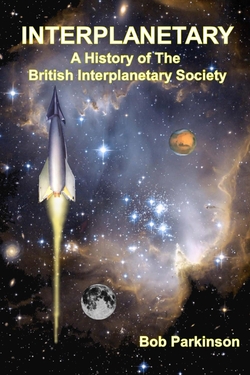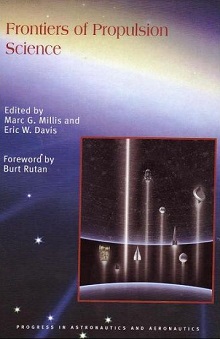Canada’s MOST space telescope (Microvariability & Oscillations of STars) has been used to put some constraints on the super-Earth GJ 581e. The work was discussed at this week’s meeting of the Canadian Astronomical Society in Ontario. Planet e is the innermost world among the multiple planets orbiting the star, and the least massive (with a minimum mass twice that of the Earth). Thus far it has been the Doppler method, measuring wavelength shift in the star’s spectral lines, that has identified the four uncontroversial planets: GJ 581 b, c, d and e.
I use the term ‘uncontroversial’ because of the ongoing debate over two other possibilities, not yet confirmed, one of which (GJ 581 g) was thought to be in the star’s habitable zone and announced as such to widespread media attention. The issue remains in doubt but I’m hearing little support for the two latter planets. Nonetheless, the GJ 581 system has stayed in the news because of habitable zone questions, the latest involving GJ 581 d, first thought to be outside the habitable zone and now found to have a chance for liquid water at the surface, assuming a carbon dioxide atmosphere in the right configuration. While all these matters continue to be studied, we now have the MOST findings, which say that if GJ 581 e transits the star, it must have a radius smaller than 1.4 times that of Earth or MOST would have detected it.
Transit or not? If the latter, we at least put some constraints on its orbital inclination. If the former, we know that it’s likely a solid rocky planet, one that, the researchers suggest, would lack a hydrogen or helium atmosphere. Diana Dragomir (University of British Columbia) led the study:
“Although transits were not detected for Gliese 581e, this result allows us to place limits on the planet’s physical and orbital properties, in addition to letting other astronomers know whether they should keep searching.”
So we keep homing in on the possibilities in this interesting system, which particularly flags the attention because it is relatively close to our Sun at some 20 light years. Also useful to learn is that MOST is showing a low level of activity on the host star. Remember that M-dwarfs have turbulent youths, spitting solar flares that could be problematic for the formation of life. The stability of GJ 581 argues that it is an older M-dwarf, and thus one that would have had time for life to emerge, assuming there is a planet on which the conditions really are favorable.
More on Blue Stragglers
We recently talked about ‘blue straggler’ stars, bluer and more luminous than would be expected by looking at the stars in the cluster around them. All of this assumes that the clusters we’ve found blue stragglers in contain stars that formed at the same time, from a single cloud of gas, with no new stars being formed since. I was interested to see that researchers at McMaster University have presented their own work on blue stragglers at the same Canadian Astronomical Society meeting. The work underscores the current explanations for stars that seem hotter, brighter and more massive than they ought to be given their cluster’s age. The thinking has an inescapable logic — clusters contain lots of stars in close quarters. Collisions and close passes are inevitable.
Alison Sills explains:
“Astronomers expect that the stars get too close to each other because of the complicated dance that stars perform in these dense clusters, where thousands of stars are packed into a relatively small space, and each star is moving through this cluster under the influence of the gravity of all the other stars. Somewhat like a traffic system with no stop lights, there are a lot of close encounters and collisions.”
Stellar interactions, then, may be producing blue stragglers that mimic the appearance of younger stars. But Sills’ work draws on Hubble Space Telescope observations of globular clusters that suggest two generations of star formation are involved rather than one, with a second generation evidently forming from material that was gently shed by the first generation, instead of, as is common in the rest of the galaxy, drawing on the remains of exploded stars. Sills is finding that this second generation of stars shows some of the same properties as the blue stragglers, including their color and their location in the cluster. So is the answer that stellar collisions and close passes produce not just blue stragglers but a related kind of star?
Some of the challenges this work will face involve understanding what happens when binary stars merge, and whether or not the model fits what we now know of blue stragglers, not to mention firming up our knowledge of whether stars in globular clusters do form in more than one burst. These stars are curiosities indeed and we’ll keep an eye on Sills’ work. I mentioned earlier in the week Martin Beech’s suggestion that blue stragglers be examined as possible instances of stellar engineering. Nothing observed thus far suggests anything other than a natural phenomenon. It’s interesting to speculate on what kind of stellar discovery really would point to a tangibly technological source, a question for the new generation of SETI specialists to ponder.



It’s the $64,000 question: what could ETIs do to stars that would blare “artificial”? Astrophysicists produce explanations for observations based on physics and alien technology would be similarly based on physics… could anything be *sufficiently* anomalous to be inexplicable by some convoluted natural explanation?
It’s great to have this interesting multi-planet star system nearby. Multiple planet systems will show more and more secrets the longer we look. We can keep fleshing out GJ 581 properties for decades to come. We live in a great age of discovery.
@Adam,
Looking at human artifacts (and animal ones, like beaver dams) I think it is clear we could recognize such artifacts. It gets harder as entropy sets in – formal manipulations of nature like garden become wilded, building become ruins, etc. Perfect planetary orbits get perturbed.
However, while we don’t know what stellar engineering might look like, if we can image planetary surfaces wit high resolution, I think we could rule out natural formations as causes for some forms.
On a planetary scale, if we saw an impossible arrangement of orbiting moons or planets, e.g. a number in the exact same orbit then we might well get the sense this was artificial.
Adam: “… could anything be *sufficiently* anomalous to be inexplicable by some convoluted natural explanation?”
Perhaps a planetary-mass black hole. No known or probable natural process to make one that would be observable at this point in the universe’s evolution.
A star that had Tritium in its spectra would be recognized as being from some artificial process since Tritium is not made naturally. Also there was a paper discussed here some time ago that a sufficiently large triangular shaped object transiting a star would produce a light curve that
would allow one to deduce the shape of the transiting object. Something large and triangular would be very suspicious I would think.
where do you hear about the support of gliese 581 g ?
henk, this post gives you the background on GJ 581 g, which many now believe does not exist:
https://centauri-dreams.org/?p=14589
This work, based on the MOST satellite observations, is instructive in another way in that it shows that in these tight budgetary times, we are most likely to place more detailed constraints on exoplanet properties in a piece-wise fashion until the breakthrough TPF-style missions launch (or perhaps at this point I should say: if they ever launch).
Talking of MOST, there’s been a reanalysis of 55 Cancri e: turns out there were a few problems in the data reduction process. The MOST radius now agrees better with the Spitzer radius, suggesting that the planet is volatile-rich unlike Kepler-10b and CoRoT-7b. The revised version of the MOST paper is here, and there’s also a new paper on the arXiv which pins down the properties of the host star somewhat better than has been done before. Seems the galaxy was producing very metal-rich stars quite early on…